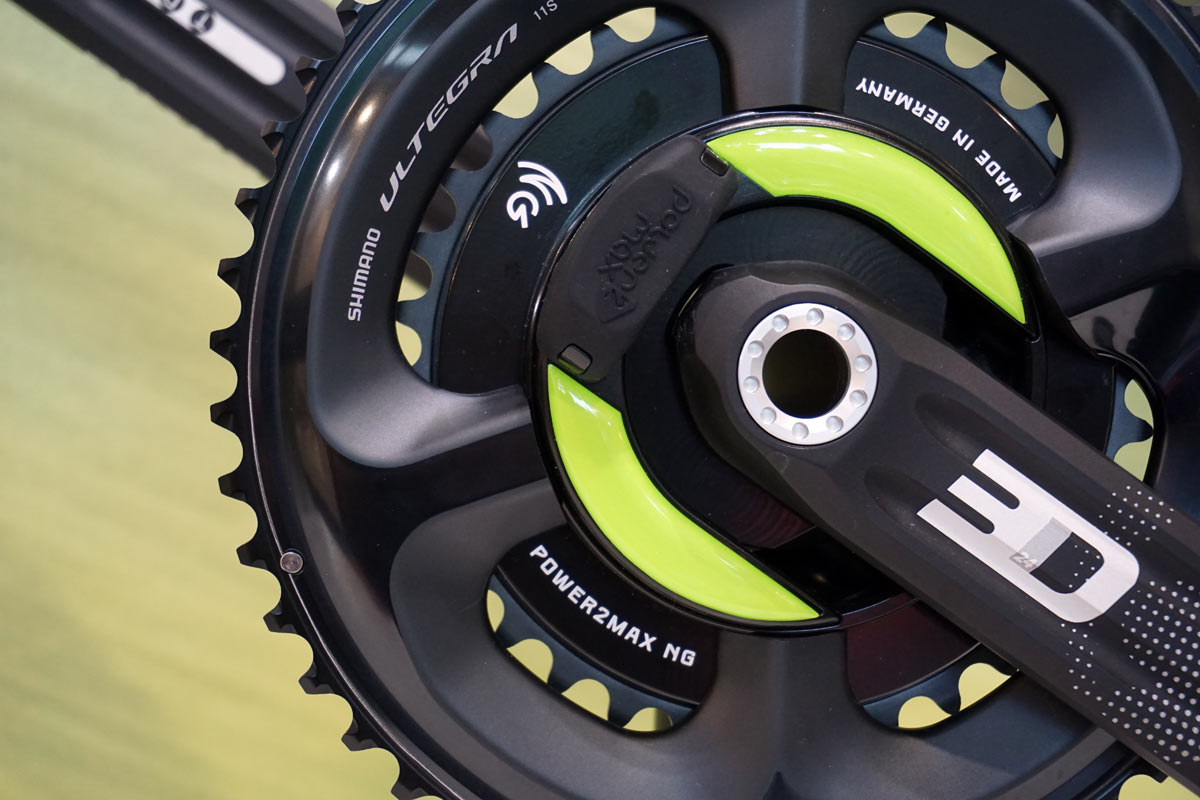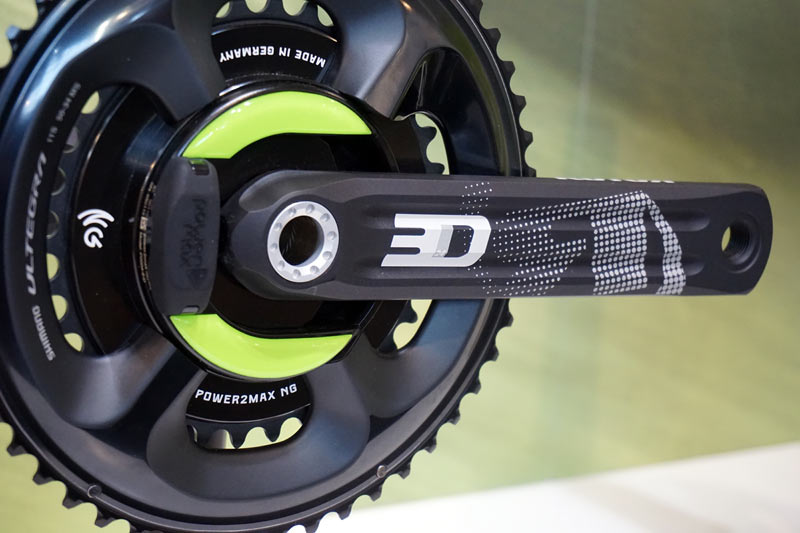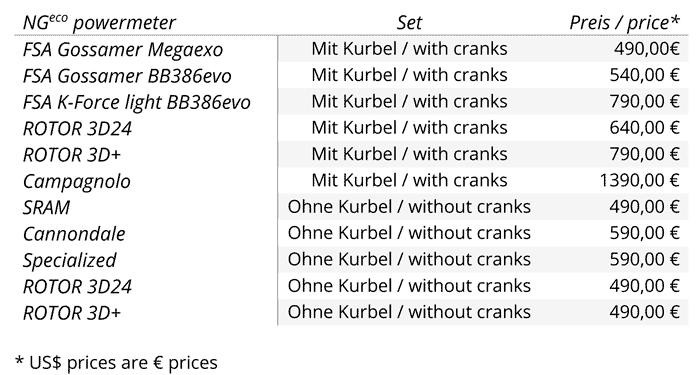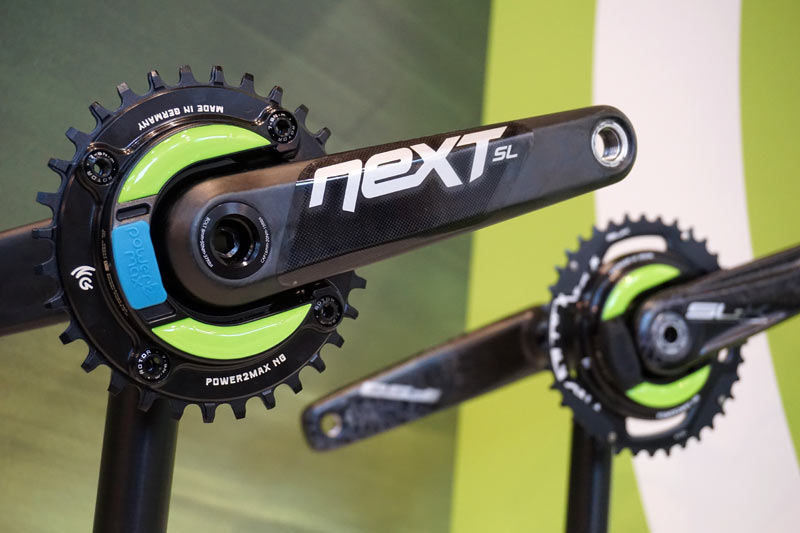If the price of power meters has been a deterrent, you’re running out of excuses. The new Power2max NGeco spider-based power meters offer dual leg measurement, cadence, temperature compensation and long battery life starting at $490. And the unit can be upgraded in the future to match most of the features of their $990 NG model.
The NGeco doesn’t get quite as much time on the calibration dyno, so they’re claiming +/-2% accuracy (versus 1% for the NG). And it gets a slightly downgraded version of temperature compensation, but it still has it. And it still measures total power from both legs (can be upgraded to measure left and right independently). Integrated accelerometer grabs cadence without needing external magnets or sensors.
The only visual cue that it’s the NGeco (for “economical) is the rubber battery cover. The NG uses a fully sealed rechargeable battery to get 150 hours. The NGeco uses a thick coin cell battery, but ups that to 400 hours run time. The cap looks simple, but they say they’ve ridden wet, muddy mountain bike trails and haven’t had any issues. It transmits in ANT+ and Bluetooth, with options for the following cranksets:
The options without cranksets are those that offer direct-mount chainring/spider solutions, letting you slot the power meter onto your existing cranks. The others require a physical disassembly in their German factory (the NGeco is made in-house), with a permanent fixing of the power meter. In instances where you want to keep your Shimano chainrings (like shown up top), they pair that with Rotor or FSA cranks.
There’s also new mountain bike power meters that replace the Type-S and use their latest internals. They’ll have NG (blue cap, left) and NGeco options for these, too.
Like the road, there are FSA solutions for non direct mount cranksets. The spider accommodates a 104bcd 4-bolt chainring, with spider options to fit Race Face and SRAM direct mount cranksets.
Available in two months for MTB, road versions are available at end of Sept.




